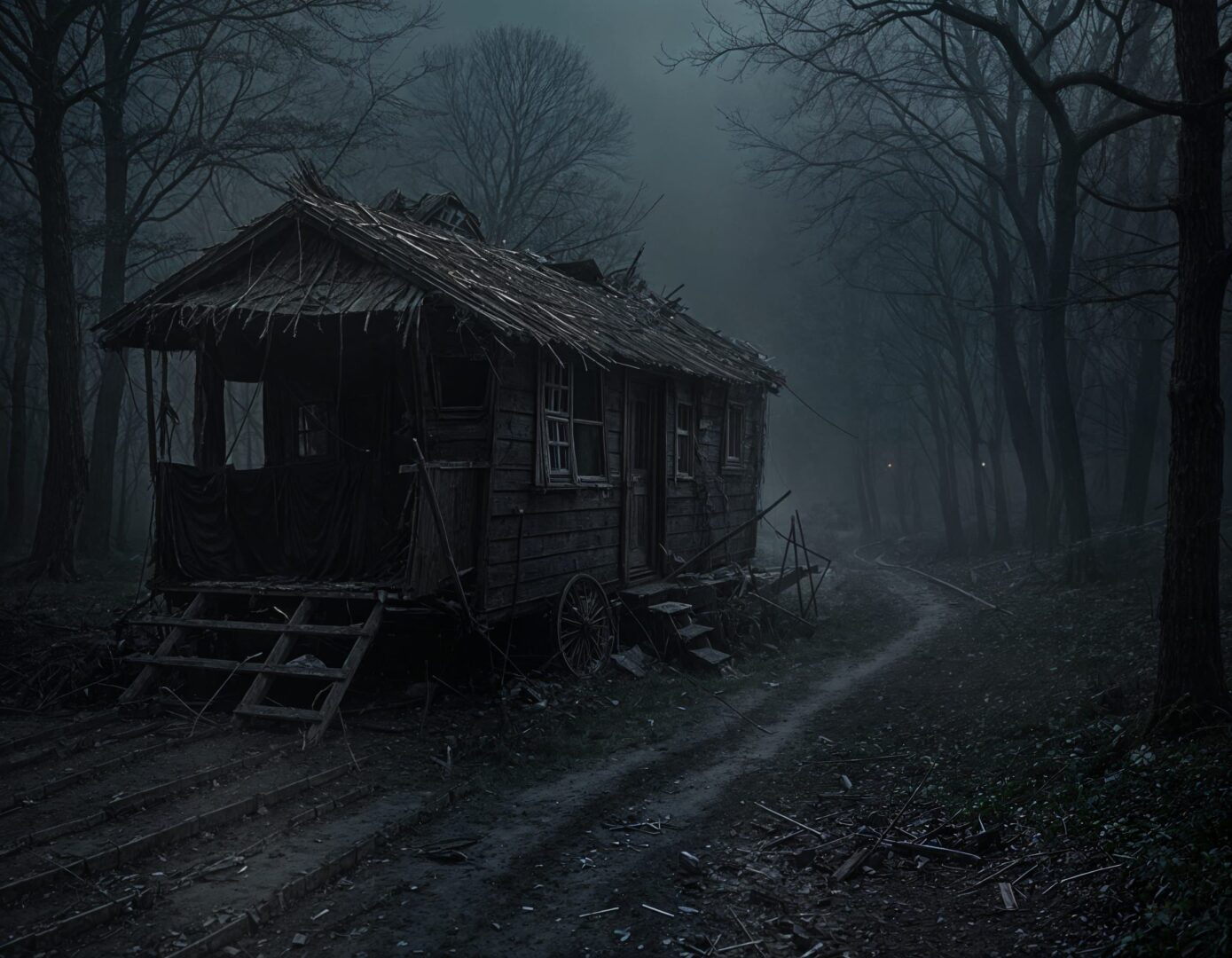
The Caravan’s Last Stand
Complexity: Complex
Type:
Severity: Dangerous. The high damage potential and the possibility of being restrained can significantly hinder a party, especially in the midst of combat.
Trigger:
Effect: When the trap is activated, a series of catastrophic effects unfold: Initial Damage: A shower of scythe-like blades swiftly spring from hidden slots in the wall of the caravan, targeting all creatures in a 30-foot radius. Each affected creature must make a Dexterity saving throw (DC 16). On a failed save, the creature takes 4d10 slashing damage; on a success, they take half damage. Secondary Effects: The blades are infused with shadowy magic that shrouds the area in dim light, imposing disadvantage on attack rolls and Perception checks until the end of the next turn. Environmental Challenge: Any creature that suffers damage from the blades is at risk of being ensnared. They must also make a DC 14 Strength saving throw or become restrained by shadowy tendrils that lash out from the blades.
Damage Output: 4d10 slashing damage (Slashing)
Detection DC:
Disarm DC:
No data available
Gameplay Notes for “The Caravan’s Last Stand” Trap
Trap Activation
- Trigger Mechanism: The trap activates when a character or mount steps onto the concealed pressure plate hidden beneath a rotting rug positioned at the center of the remains of the caravan.
- Area of Effect: Upon activation, all characters within a 30-foot radius will be affected by the trap’s initial damage.
Activation Steps:
- Pressure Plate Activated: As soon as weight is detected on the pressure plate, the trap springs to life.
- Immediate Reaction: The scythe-like blades concealed in the walls will activate simultaneously, initiating the first layer of effects.
Detection and Disarm Notes
-
Detection: Characters can spot the trap with the following checks:
- Perception Check (DC 16): Spot the pressure plate, revealing a shallow indentation.
- Investigation Check (DC 16): Notice the vibrations or subtle movements in the rug or hear a soft mechanical click.
-
Disarm Mechanism: Once the trap is activated, characters may attempt to disarm it using:
- Dexterity Check (DC 15 with Thieves’ Tools): To safely disengage the pressure plate.
- Arcana Check (DC 16): To identify and disable the magical bindings with Counterspell or Dispel Magic.
Clues for Disarming:
- Check for the rug’s sagging under pressure, scattered iron fragments, and a disturbed layer of dust suggesting previous tampering.
Suggested Tactics and Variations
- Scaling Difficulty: For lower-level parties, reduce the initial damage by 1d10 or adjust the DC for saving throws.
- Targeting Characters: Consider “sensing” the characters’ weakness; if one character took a significant hit previously, have the trap target them with higher priority in the blades’ angles.
- Optional Effects: Introduce spectral hands that may reach out to grapple characters who fail the saving throws.
Initiative and Round Actions
- Trap Initiative: Roll initiative for the trap using a d20 + 3 (use a passive initiative based on player-level adjustments).
- Actions: Each round, the trap will perform the following actions:
Round Actions Breakdown:
-
Initial Activation (Round 1):
-
Action 1: Activate the blades.
- Attack Roll: +7 to hit.
- Damage: 4d10 slashing damage (Dexterity Saving Throw DC 16 for half damage).
- Environment Effect: Visibility reduced to dim light, imposing disadvantage on attacks and Perception checks until end of the next turn.
-
Action 1: Activate the blades.
-
Phase Transition (Round 2):
-
Action 2: Targets characters hit by blades.
- Strength Saving Throw DC 14: On failure, the character becomes ensnared—cannot move or take action until freed.
- Dynamic Environment: The ambient shadows begin whispering, causing a fear effect; DC 15 Wisdom saving throw to avoid being frightened until the end of the attacker’s next turn.
-
Action 2: Targets characters hit by blades.
-
Escalation (Rounds 3+):
-
Action 3: The blades snap back into concealment and reconfigure for another attack.
- This can be used to reset the attack (same mechanics as Round 1).
- Cursed Atmosphere Effects: At the end of Round 3, characters who have failed saving throws must make a DC 15 Constitution saving throw to avoid exhaustion (level 1).
-
Action 3: The blades snap back into concealment and reconfigure for another attack.
Round-by-Round Effects
- Round 1: Initial blade attack; reduced visibility; characters make saving throws.
- Round 2: Ensnare attempts on injured characters; amplify ambient effects (whispers), with characters needing to make Wisdom saves.
- Rounds 3 and Beyond: Resetting blades attack—this continues until there are no characters nearby or the trap is disabled. At Round 5, increase attack damage by +2d10 if not disabled.
Additional Tips for Running the Trap Smoothly
- Track Effects: Keep track of which characters are ensnared, frightened, or have failed saving throws—interactive status cards for players can help maintain awareness.
- Provide Narrative Feedback: As the trap activates, describe the sensation of being watched, the coldness of the air, or the feeling of dread building to enhance immersion.
- Dynamic Threat: The ambiance of whispers can create tension; you may involve character backstories, linking them to the spirits cursed in the trap for added depth.
By managing these elements, you can ensure a thrilling experience for players as they navigate “The Caravan’s Last Stand” trap.










